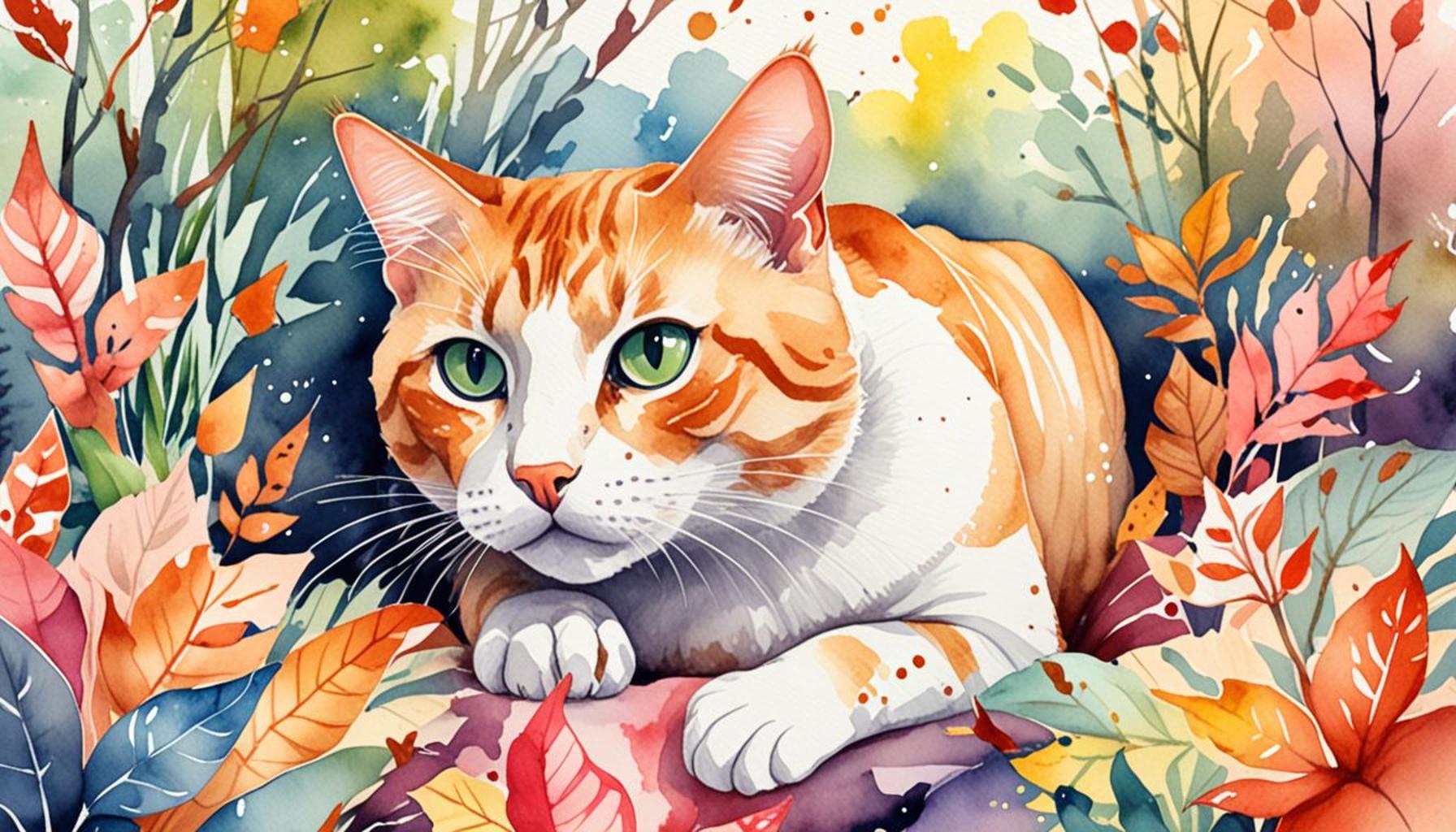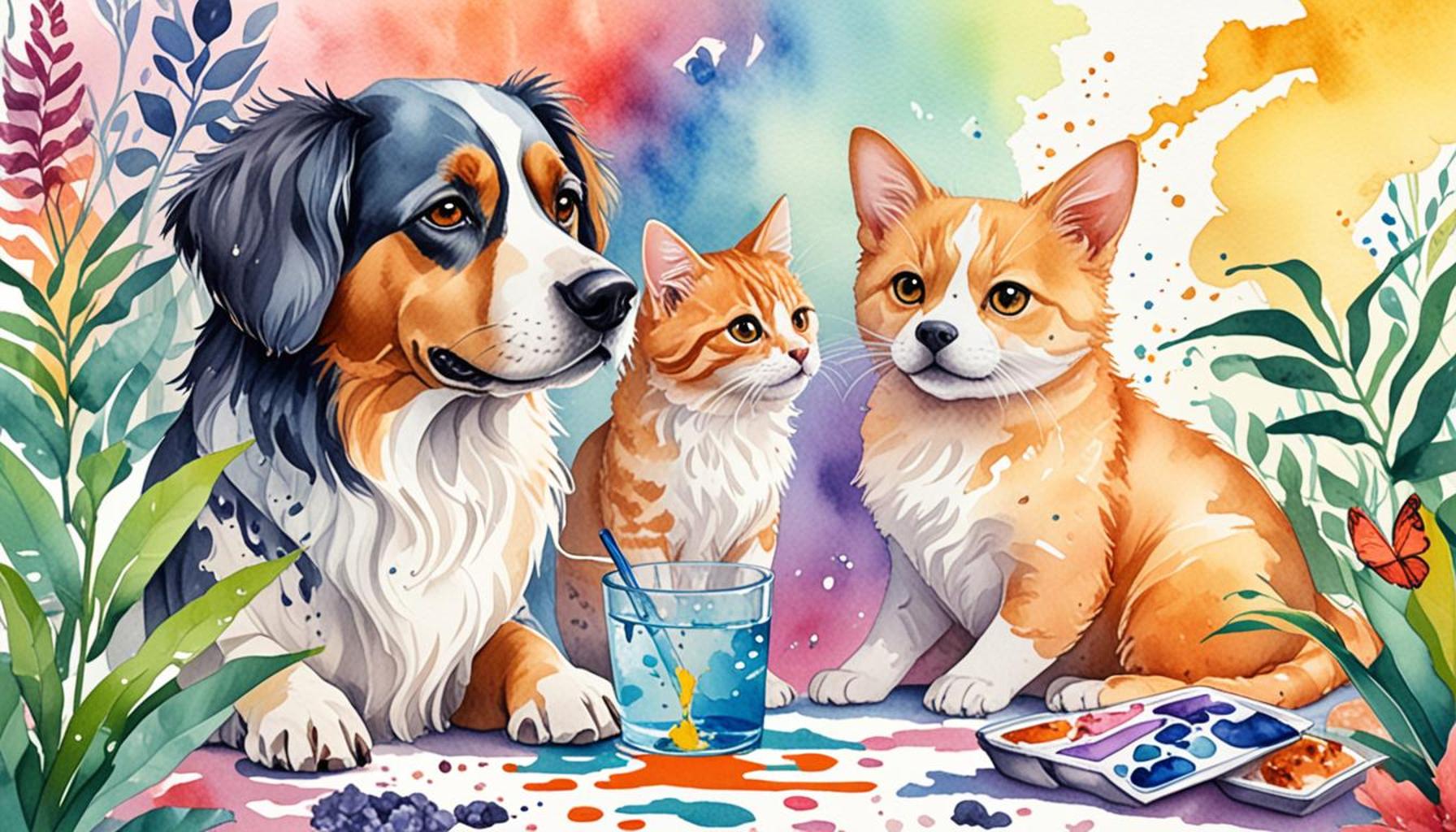The Hunting Behavior of Cats: Understanding Instincts and Playfulness

Exploring the Intriguing Hunting Behavior of Cats
Cats are not just adorable companions; they embody a striking blend of instinctual behavior and playful demeanor that has been finely honed over millions of years of evolution. The evolution of the modern domesticated cat from its wild ancestors, such as the African wildcat, provides a rich background to understand their unique behaviors today. These qualities make them not only enchanting pets but also remarkable hunters.
One of the most fascinating aspects of feline behavior is their hunting prowess, which is evident in various activities they engage in daily. Let’s explore some key components of their hunting behavior:
- Stealth and Ambush: Cats are natural stealthy hunters. They possess the remarkable ability to stalk their prey with uncanny quietness. This involves crouching low to the ground and taking slow, deliberate steps, often hiding behind furniture or in foliage to observe their surroundings. Their acute sense of hearing enables them to pinpoint even the softest rustle of a mouse in grass.
- Pouncing: The quintessential image of a cat is often one ready to leap. With powerful hind leg muscles, they can leap distances up to six times their body length. This agility is complemented by their flexible spine and sharp retractable claws, allowing them to capture prey quickly and efficiently.
- Play as Practice: For kittens, playtime serves as essential training for hunting. Whether it’s pouncing on a string, chasing a laser pointer, or batting at a feather toy, these activities mimic the skills required for capturing live prey. This playful behavior is not just for fun; it reinforces their stalking and ambush tactics, crucial for survival instinctually.
Understanding these behaviors can greatly enhance the relationship between cats and their human companions. By observing how your cat interacts with its environment, you can gain insights into its natural instincts and preferences. For instance, providing climbing structures or engaging toys can stimulate their innate curiosity and keep them mentally active.
Moreover, recognizing the importance of play can lead to a healthier, more fulfilling life for your feline friend. Regular play not only satisfies their hunting instincts but also helps prevent obesity, which is a growing concern for cats in the United States. According to a study by the Association for Pet Obesity Prevention, more than 50% of cats in the U.S. are classified as overweight or obese. Encouraging active play is critical in combating this issue.
This exploration into the hunting behavior of cats highlights their biological characteristics and underscores the mental and emotional benefits that these innate skills bring to their lives. Delving into these traits fosters a deeper admiration for our feline friends and offers practical ways to enrich their daily experiences.

LEARN MORE: Click here to discover the benefits of a balanced diet for your dog
The Fascination of Feline Predators
Cats, both domestic and wild, share a common lineage of remarkable hunting skills that have evolved over countless generations. Their intrinsic hunting behavior not only reflects their ancestral traits but also showcases their adaptability in various environments. Understanding these behaviors allows cat owners to provide a more stimulating and enriching environment for their pets, aligning their needs with the instinctual drive that keeps these animals vibrant and engaged.
When observing a cat, one cannot help but notice their predatory instincts at play. These hunting behaviors can be broken down into several key phases that highlight the elaborate ritual of catching prey:
- Tracking: Cats have a keen ability to sense subtle movements. They utilize their sharp eyesight and acute hearing to track potential prey. This talent is often showcased in their ability to notice the smallest changes in their environment. This phase can be seen when a cat sits by a window for hours, watching the world go by, preparing for that moment to pounce.
- The Chase: Once their target has been identified, cats initiate the chase. They often employ bursts of speed interspersed with calculated pauses, allowing them to sneak up on their prey. Unlike many animals that rely solely on speed, cats blend tactics with agility. The nature of this chase is reflected even in playtime, where a cat might dart after a dangling toy, honing their skills and reflexes.
- Catching and Killing: In a natural setting, this phase remains crucial for survival. After a successful chase, cats employ their exceptional agility and sharp claws to accost the prey. In household scenarios, we sometimes witness this instinct resurfacing in playful behaviors, with a cat hiding and pouncing on their favorite plush toys or a parent’s unsuspecting toes.
The significance of these behaviors goes beyond mere survival; they are deeply rooted within the psychological framework of the cat. Play mimics these hunting phases and serves a dual purpose. For young kittens, play mirrors essential skills needed for hunting. For adult cats, it provides critical physical and mental stimulation, keeping their instincts sharp and their minds engaged.
One striking statistic to consider is that a healthy play routine can reduce stress and anxiety in cats, improving their overall well-being. The The American Animal Hospital Association emphasizes that play is vital not only for physical exercise but also for emotional health, showcasing its importance in preventing behavioral problems in household pets.
By fostering these natural instincts through appropriate play, cat owners can help their pets lead healthier, happier lives. Understanding the nuanced hunting behaviors of cats informs our approach to their care, allowing us to facilitate environments that promote both playfulness and instinctual gratification.
The hunting behavior of cats is deeply ingrained in their instincts, stemming from their ancestry as solitary hunters. When we observe our feline friends in action, we often see a remarkable display of agility, stealth, and playfulness that mimics their behaviors in the wild. This instinctual hunting drive and the resulting play tactics are not just forms of entertainment; they are crucial for a cat’s mental and physical health.
Instincts in Action
To understand the hunting behavior of cats, one must recognize the fundamental instincts that govern their actions. Cats are opportunistic hunters, finely tuned to stalk, chase, and pounce on their prey. In your home, this can be observed when your cat engages in playful behaviors such as chasing a feather toy or stalking a moving laser dot. These activities are less about mere entertainment and more about honing their survival skills. It’s important to note that play simulates real hunting scenarios and helps sharpen their instincts. According to recent studies, 70% of cats display this natural hunting behavior during playtime, an essential aspect of their lifestyle.
The Role of Playfulness
Playfulness serves a significant role in a cat’s development and overall well-being. Kittens learn essential hunting techniques through play, which prepares them for adulthood. This behavior can be observed as early as six weeks old, where they engage in pouncing, climbing, and wrestling with siblings. Providing interactive toys and environmental enrichment can foster this playfulness, allowing cats to fulfill their instinctual needs. Importantly, engaging in regular play can combat behavioral issues and reduce stress, proving vital for indoor cats who may have limited opportunities for real hunting.
| Instinctual Behavior | Key Features |
|---|---|
| Stalking | Cats utilize stealth to approach their ‘prey’, demonstrating sharp instincts. |
| Pouncing | This action mimics the final stage of hunting, showcasing agility and precision. |
| Play-Fighting | Kittens practice their hunting skills, ensuring they are well-prepared for real scenarios. |
| Environmental Enrichment | Providing engaging toys and spaces supports mental stimulation and wellbeing. |
As we continue to study the intricate relationship between instincts and playfulness in cats, it becomes clear that understanding these behaviors not only enriches our knowledge but also enhances our bonds with these fascinating creatures. Providing environments that stimulate their natural instincts can lead to healthier, happier lives for our feline companions.
DISCOVER MORE: Click here to learn about the critical role of early socialization in your puppy’s growth
The Role of Environment and Interaction in Hunting Behavior
While the fundamental hunting behavior of cats is innate, their environment plays a crucial role in shaping how these instincts are expressed. Indoor cats often face limitations that prevent them from engaging in their natural hunting practices. Hence, creating a stimulating indoor environment is essential for their physical and mental health. Enrichment can come in various forms, including climbing structures, interactive toys, or even simple DIY obstacle courses designed to mimic the outdoor landscape.
Notably, using puzzle feeders can provide an engaging experience that aligns with a cat’s hunting instincts. These devices challenge cats to work for their food, replicating the effort required to catch prey. Studies suggest that such interactive feeding methods can enhance a cat’s problem-solving skills, reducing boredom and promoting healthier eating habits. Additionally, according to the American Association of Feline Practitioners, enriched environments can significantly decrease tendencies toward behavioral issues, such as aggression or destructive behaviors, which often arise from pent-up energy.
Furthermore, interactive play between owners and their felines fosters an essential bond while simultaneously simulating hunting experiences. Utilizing feather wands, laser pointers, or small, wand-like toys allows owners to mimic the movements of potential prey. This kind of interaction not only satisfies the cat’s instinctual drive but also encourages exercise, contributing to a healthier lifestyle. A study published in the Journal of Feline Medicine and Surgery illustrates how regular interactive play can significantly lower stress hormones in cats, making them more relaxed and well-adjusted.
Another fascinating aspect of a cat’s hunting behavior is their unique ability to display enthusiasm for different kinds of prey. Research indicates that the type and size of prey a cat is exposed to during play can influence hunting enthusiasm and techniques. For example, a cat that frequently engages with small, quick-moving toys may adopt a more aggressive and rapid pouncing strategy, while those interacting with larger, slower objects may demonstrate a more calculated approach. This adaptability highlights the learning capacity of cats and the importance of varied play experiences in honing their hunting skills.
Moreover, social interactions with other pets can also impact a cat’s hunting behavior. In multi-pet households, cats may exhibit more vocalizations and increased activity levels, especially when engaging in play-fighting or cooperative hunting games with other animals. These dynamics reflect natural instincts where cats may hunt in packs when they are in the wild, demonstrating their social nature while helping them refine their skills.
However, it is crucial for cat owners to strike a balance when fostering these instincts. Encouragement and stimulation should be provided without overexerting the feline, as excessive stress or frustration can lead to anxiety and behavioral problems. Observing a cat’s body language during play can offer insights into their comfort levels and enjoyment, ensuring that their hunting experiences remain positive and enriching.
In essence, examining the intricate interplay between a cat’s instinctual behaviors and the environment offers vital insights into their overall well-being. By understanding how to foster these natural tendencies through imaginative and varied play, cat owners can not only satisfy their pets’ hunting instincts but also nurture their emotional and physical health, leading to a more harmonious coexistence.
DISCOVER MORE: Click here for tips on preventive care for your pet’s oral health
Conclusion: Embracing the Instincts of Our Feline Friends
Understanding the hunting behavior of cats provides invaluable insights into their emotional and physical well-being. As highlighted throughout this article, a combination of innate instincts and environmental factors shapes how cats express their predatory nature. Indoor cats, in particular, often rely on enriched environments and engaging play to fulfill their natural hunting urges, making it essential for owners to provide stimulating experiences.
Through the use of interactive toys, climbing structures, and puzzle feeders, cat owners can offer their pets the opportunity to practice their skills while promoting mental stimulation and reducing potential behavioral issues. The importance of regular, interactive play cannot be overlooked; it serves not only as a simulation of hunting practices but also as a bonding experience between owner and pet, essential for a cat’s emotional health.
Additionally, the adaptability of cats in their hunting techniques underlines the significance of varying play experiences. This adaptability becomes even more intriguing in multi-pet households, where social interactions can enhance their natural instincts and exuberance during play. However, it remains vital for owners to observe their cats carefully, ensuring that the stimulation provided aligns with their comfort levels and promotes positive experiences.
In conclusion, by recognizing and fostering the playfulness inherent in a cat’s hunting behavior, pet owners can significantly improve their feline companions’ quality of life. Embracing these instinctual urges nurtures a harmonious relationship and paves the way for healthy, happy cats who thrive in environments tailored to their unique needs.



